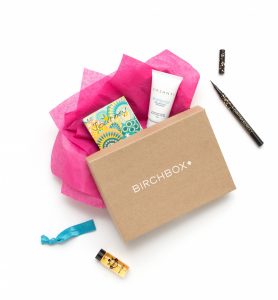Marketing to Women: Trends to Watch in 2015 and Beyond

I believe that most brand and marketing managers understand the economic importance of women, and recognize that they influence 85 percent of all household purchase decisions. I also believe that 2015 will bring a surge of renewed interest in the subject of marketing to women. Going forward in this blog we’ll discuss recent trends, the differences in female market segments, and why women’s influence over purchase decision-making will continue to grow.
In the meantime, Bridget Brennan, author of Why She Buys, has written an article for Forbes.com about 2015 trends in marketing to women. Her insights are so spot-on that I’ve reprinted the entire article below.
2014 was a watershed year in marketing to women. We witnessed female-empowerment advertising campaigns from brands like Pantene (Not Sorry), Under Armour (I Will What I Want) and Always (Like a Girl); we saw a sweeping effort to update women’s images in stock photography with the Lean In Getty Images Collection; and we witnessed a GoldieBlox Super Bowl commercial. Not bad, 2014, not bad.
It’s exciting stuff. And yet the conversation, hard work, and opportunity have just begun. I predict 2015 will be the year that marketers move beyond signaling to women, “We know you’re important, empowered and strong,” to a broader, holistic approach to women consumers that impacts every aspect of the business with the following types of initiatives:
1. Optimizing the customer experience for women consumers.
From conducting sales training initiatives focused on “E.Q.”-style communication techniques, to enhancing the ambiance of retail environments and refining the editorial voice of websites, there’s room to optimize the experience for women consumers no matter what your business. After all, women don’t just compare your company to your competitors: they compare it to their favorite best-in-class retailers and ecommerce sites. And depending on what you sell, they may even compare your website and videos to their favorite magazines and television shows. That’s why forward-looking companies will invest in women’s insights research and look outside their own industries to benchmark themselves against best-in-class, female favorites like Anthropologie, IKEA and Amazon.com.
2. Creating retail innovations based on women’s cultural preferences.
Take product samples. They’re gold. Women know this. Their medicine cabinets and bathroom drawers are stuffed with this precious loot, which is usually obtained free of charge when they check out at beauty counters or attend parties with excellent goodie bags. Enter Birchbox, the successful ecommerce company built on the understanding that women would be willing to pay to receive product samples. The business features a subscription model in which women pay to be surprised and delighted by a box of beauty product samples every month. Men are in on the action too, through Birchbox Man, which was introduced after the initial success of the subscription service for women.
Then there’s Stitch Fix: an online women’s fashion retailer that offers personal styling services at a mass-market price point. The service fulfills a common fantasy of having a “stylist,” a phenomenon driven by celebrity fashion coverage and the emergence of stylists who have become celebrities in their own right. (See: Rachel Zoe). This is just the beginning of a new wave of retail businesses built around powerful female insights. Watch this space: there’s more to come in 2015.
3. Making selfies as natural to shopping as the cart.
We used to say that a picture is worth a thousand words. That was before Instagram. Now a picture is worth so much more. The irresistible allure of selfies fuels contests, sweepstakes and promotions of every conceivable kind, and will increasingly drive image-based search as well as function as a research tool for brands. Photos and visuals of all varieties will become even more prominent in the marketing toolbox in 2015, particularly for businesses with a large base of female buyers. Women have long been the photo album makers, scrapbook keepers and memory/milestone custodians for their households in the offline world, and in the past decade this behavior has shifted online.
So whether we’re talking about traditional retailers like Target mobilizing customers to take selfies in-store for sweepstakes prizes, or brands like American Express leveraging customer influencers for a campaign that drove 10 million Instagram impressions in just two weeks, the creativity in the visual web has just begun.
4. Catering to women consumers as a way to stay one step ahead of Millennials.
Many values that historically have been associated with women now apply to Millennials of both genders. Generally speaking, Millennials want what women consumers have always wanted from manufacturers and retailers. A partial list includes:
- A high design aesthetic (in addition to functionality)
- Brands/products that make the world a better place in some small way
- Family-friendly amenities and service options
- Great value
- An engaging retail environment
Trader Joe’s, Starbucks, and Apple are just a few examples of brands beloved by women and Millennials (of both genders), because they provide high value products in inspiring environments. As Millennials grow into their prime earning years, brands will find that women provide a valuable roadmap to determining the wants and needs of younger consumers.
The world is changing fast. Yet women’s domination of consumer spending in both ecommerce and traditional retail remains constant. The tools of the trade may be changing, but women’s role as “chief purchasing officer” of the home hasn’t – nor have the fundamentals of female culture. It’s comforting to know that no matter how fast technology advances, no matter how frequently people shop on their mobile phones and laptops, one thing remains the same: women are the purchasers of this world, and understanding why she buys is the most valuable insurance policy there is, for 2015 and beyond.
